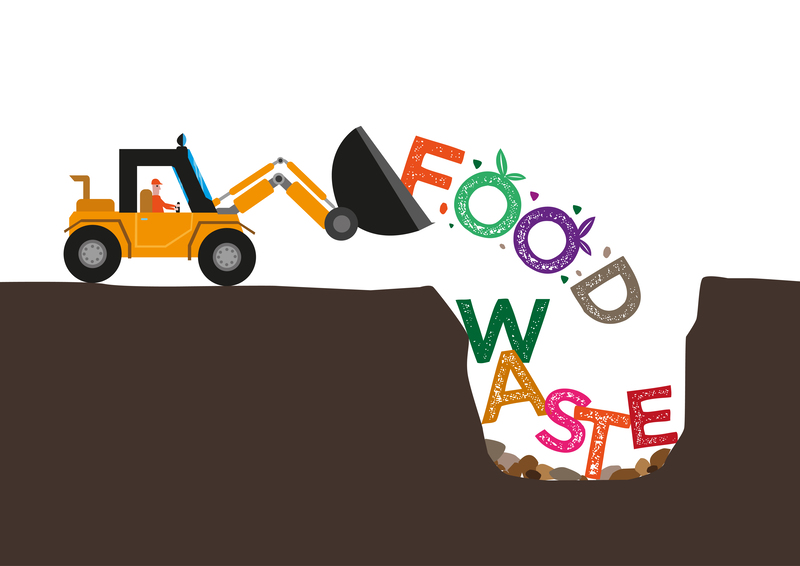Innovative Approaches to Plant Pot Disposal
With the ever-increasing interest in home gardening and indoor plant care, plant pots have become ubiquitous in homes and gardens around the world. While nurturing plants brings a multitude of benefits, the question remains: what do we do with all those empty plastic, ceramic, or even biodegradable pots once they are no longer needed? Traditionally, many pots end up in landfills, contributing to environmental degradation. However, as environmental concerns grow, innovative methods of plant pot disposal are coming to the fore, providing sustainable and creative solutions that benefit both people and the planet.

Why Rethink Plant Pot Disposal?
A staggering number of pots sold on the market are made from plastic, which can take hundreds of years to decompose. Eco-friendly plant pot disposal has become an essential consideration for gardeners, landscapers, and environmentalists. By exploring cutting-edge reuse, recycling, and upcycling techniques, we can dramatically reduce waste and foster a healthier environment.
The Environmental Impact of Conventional Pot Disposal
- Landfill Overflow: Non-biodegradable pots take up precious landfill space for generations.
- Resource Depletion: The production of synthetic plant containers often requires petroleum-based materials and energy.
- Microplastic Pollution: Plastic pots can degrade into microplastics, contaminating soil and water.
- Loss of Valuable Materials: Many pots could be reused or recycled, preserving plastic, ceramic, or clay resources.
New Solutions for Plant Pot Disposal
Emerging innovative plant pot disposal methods focus on minimizing waste, conserving resources, and even generating economic or social value. Let's explore several approaches that are gaining traction.
1. Recycling Programs and Pot Return Schemes
Many horticultural centers and nurseries are now offering plant pot recycling programs. These programs collect used pots, clean and sort them according to material, and send them to appropriate recycling facilities.
- Retailer Collections: Major gardening retailers host drop-off points for used pots, making recycling accessible for all customers.
- Municipal Recycling: Some cities and regions include plant pots in their curbside recycling pickup--check local guidelines!
- Producer Return Schemes: Certain pot manufacturers incentivize customers to return used pots for a discount or loyalty points, supporting a circular economy.
Recycling reduces the demand for virgin materials and prevents pots from ending up in landfill. It is important, however, to clean pots of soil and debris before recycling to ensure proper processing.
2. Biodegradable and Compostable Pots
In response to the need for sustainable plant pot disposal, the gardening industry has developed pots made from organic materials such as coconut coir, peat, rice husks, bamboo, and even compressed paper.
- Compostable Alternatives: These pots can be planted directly in the soil, where they break down naturally and enrich the earth. Perfect for seedlings and young plants!
- Minimizes Waste: There's no pot to throw away--these containers feed your garden rather than polluting it.
- Reduces Transplant Shock: Roots stay undisturbed when the whole pot is planted.
While biodegradable pots are innovative and ethical, proper disposal is vital. For optimal results, check product instructions and place pots in hot compost piles or commercial compost facilities where available.
3. Creative Reuse and Upcycling
The adage "one man's trash is another man's treasure" is particularly true when it comes to creative plant pot disposal. Harness your imagination and give plant pots a second life!
- Garden Art Projects: Paint and decorate old pots to create unique garden ornaments, fairy houses, or bird feeders.
- Indoor Organizers: Repurpose clean plastic or ceramic pots as stylish storage for small items, from craft supplies to kitchen utensils.
- Drainage and Landscaping: Broken pots can be used as drainage at the bottom of larger planters, or as edging in garden beds and paths.
- Community Initiatives: Donate unwanted pots to schools, community gardens, or local plant swaps to support communal greening efforts.
Upcycling fosters sustainability while encouraging creativity and community involvement. Post your projects on social media to inspire others and help spread awareness of responsible plant pot management.
4. Designing for Disassembly and Recyclability
Product design is key to the future of eco-friendly plant pot disposal. Manufacturers and designers are increasingly embracing the principles of "design for disassembly", creating pots that are easy to recycle or biodegrade at end-of-life.
- Material Labels: Clear labeling of pot materials helps consumers and recyclers sort items appropriately.
- Mono-Material Construction: Pots made from a single recyclable material are easier to process and less likely to end up in landfill.
- Modular Pots: New modular designs allow for parts to be reused or replaced instead of discarding the whole pot after damage.
By making it easier to recycle or dispose of pots responsibly, design innovation is making a huge contribution to sustainable horticultural practices.
5. Packaging Take-Back Initiatives
Some companies are going a step further by partnering with reverse logistics services to offer packaging and plant pot take-back schemes. Retailers or manufacturers provide collection points, and used containers are sent back for reuse or material recovery.
- Closed-Loop Systems: Used pots are sanitized and reused for new plants--a zero-waste solution!
- Consumer Incentives: Discounts or loyalty points encourage participation and foster brand loyalty.
- Traceability: Knowing where pots go at end-of-life ensures accountability and environmental stewardship.
The Role of Technology in Plant Pot Disposal
State-of-the-art solutions are emerging as technology is increasingly harnessed to address the challenges of plant pot disposal.
Smart Sorting and AI
Advances in artificial intelligence and robotics are making it easier for recycling centers to accurately sort plant pots by material type, color, and condition. This ensures more pots are reclaimed and reused, and fewer end up in landfill.
Biotechnology and New Materials
Scientists are working on bioplastic pots that are both durable during use and easily decomposable after disposal. These materials can break down in home composters or even dissolve harmlessly in the soil, reducing microplastic pollution concerns.
Online Platforms and Sharing Economies
There are now digital platforms where you can donate, swap, or sell your used plant containers locally, streamlining the process of reuse and reducing transportation emissions.
- App-Based Swaps: Connect with local gardeners who need pots, eliminating unnecessary waste.
- Marketplace Solutions: List large numbers of pots for free to schools and community groups.
- Online Guides: Access digital resources for upcycling ideas or local recycling information.
Best Practices for Responsible Plant Pot Disposal
Whether you are a hobbyist or a commercial grower, adopting responsible plant container disposal habits is simple and impactful. Here are a few guidelines to follow:
- Clean Before Disposing: Remove soil and plant residues to prevent pest and disease spread and facilitate recycling or reuse.
- Check Local Regulations: Recycling programs vary--check with your local council or waste management facility to ensure compliance.
- Prioritize Reuse: Before discarding, see if the pot can be reused, upcycled, or given away.
- Buy Responsibly: Choose biodegradable or recyclable pots when purchasing new plants, or support companies that offer take-back programs.
- Educate Others: Share information with friends, family, and your gardening community to amplify sustainable disposal practices.
The Future of Plant Pot Disposal
The trend towards sustainable pot disposal will only continue to strengthen as consumers, businesses, and regulators place greater emphasis on waste reduction and environmental stewardship. Expect to see even more breakthroughs in materials science, recycling infrastructure, and community-based initiatives in the years ahead.
Conclusion: Moving Beyond Throwaway Culture
Sustainable and innovative approaches to plant pot disposal not only benefit the environment but also support a shift towards a circular, responsible gardening culture. By choosing recycled, biodegradable, or reusable pots--and by actively participating in local recycling and upcycling initiatives--gardeners and plant enthusiasts can make a real difference.
Every small action adds up. Whether you're a green-thumbed veteran or new to gardening, embracing these innovative methods for plant pot disposal will help cultivate a brighter, cleaner, and more resourceful future.

Frequently Asked Questions about Plant Pot Disposal
Can all plastic plant pots be recycled?
Not necessarily--some plastic types are not accepted by local recycling facilities. Always check local guidelines and look for recycling symbols on the pot.
What should I do with broken or damaged plant pots?
Upcycle them for drainage, landscaping, or creative DIY projects. If recycling, small pieces may not be processed--collect them in a larger container or use as garden decor.
Are biodegradable pots always compostable?
Most are, but it's important to follow manufacturer instructions. Some pots are designed for industrial composting rather than home compost heaps.
How can I find a plant pot recycling program near me?
Contact your nearest garden center, horticultural supplier, or local government's waste department. Many organizations also list recycling programs online.
Final Words
Embracing innovative plant pot disposal strategies means more than waste reduction--it's about cultivating sustainability, creativity, and community spirit in gardening. Let's sow the seeds for a greener tomorrow, one pot at a time.